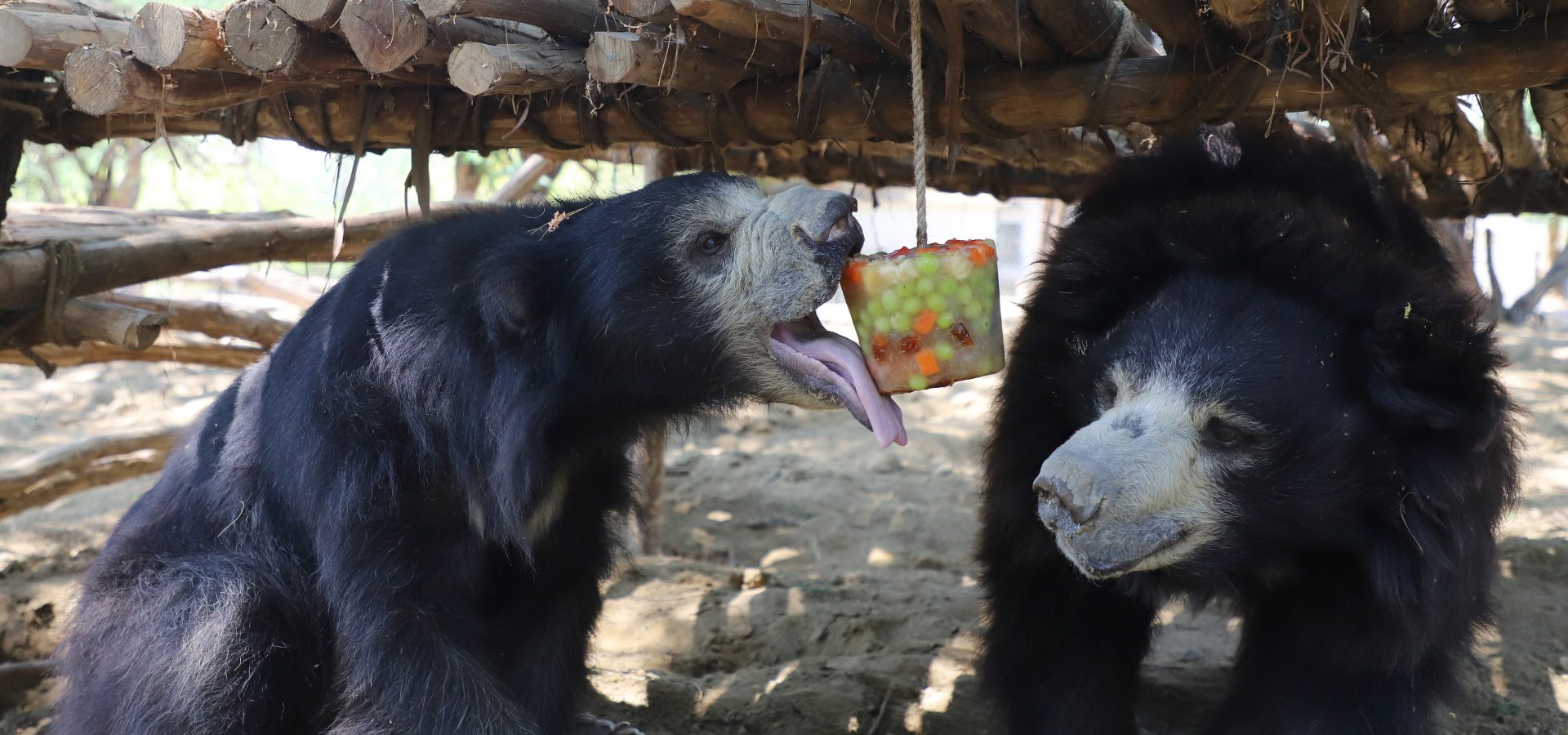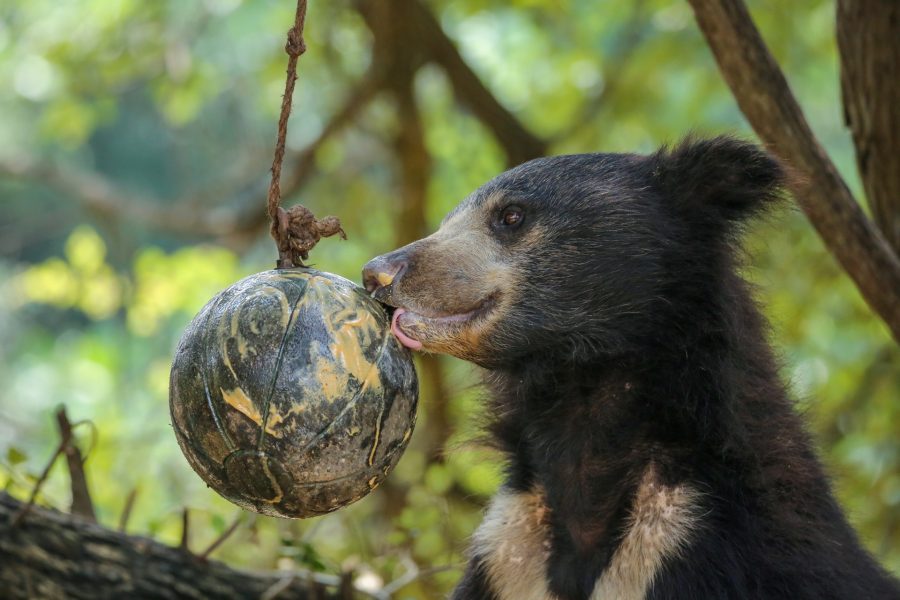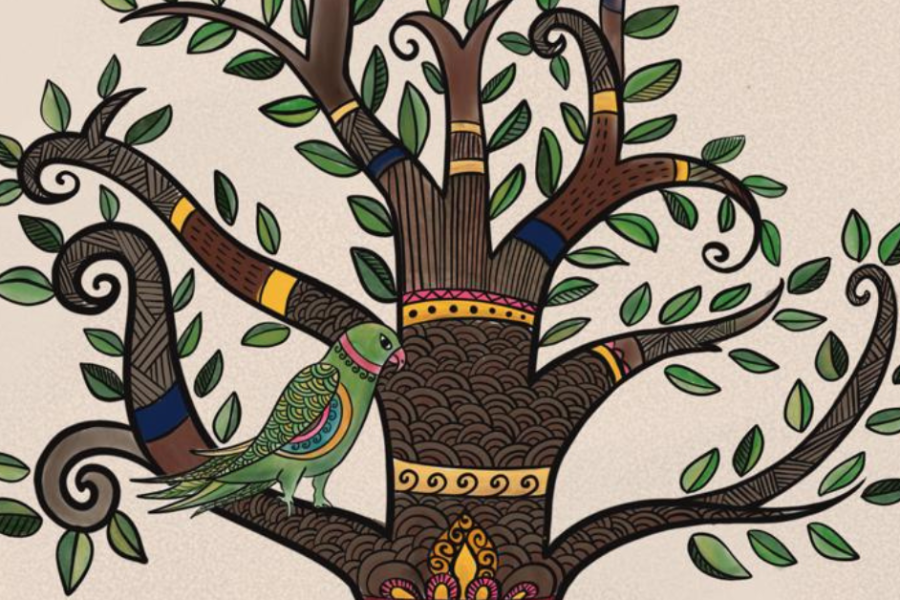Don’t you love the taste of fresh mangoes or juicy watermelons in summers? Well, you are not alone! While fruits are delicious treats for humans, fruit-eating animals love to bite into them too! But what if we told you that the relationship between animals and fruits is much deeper than we thought. Some scientists have suggested that the taste for fruits finds its roots in a clever trick by flowering plants!
Also known as angiosperms, these flowering plants consist of flora that appeared on Earth around 145 million years ago during the Cretaceous Period. After pollination, the flowers of these plants become fruits that entice many animals into consuming them. The seeds inside these fruits pass through the animal’s digestive system, and as the animals move around, the seeds are pushed out with their droppings. So, not only do these fruits give immense joy to their eaters (or frugivores), their plants are bound to sprout and grow across large distances!
Animals in the wild become vital agents of seed dispersal, and are therefore important in the life cycle of diverse plants. Fruits come in various shapes, and so do fruit-eating animals — from the smallest palm civet to our country’s largest animal, the Indian elephant. While fruits form part of the diet for most animals, there are some that wholly depend on them for sustenance.
However, as human habitations encroach into wild lands, many trees — both flowering and otherwise — have been removed to give rise to concrete jungles. This has caused many of the frugivores or fruit-eating animals to face extreme food shortages and enter into human-animal conflict as they fend for themselves. Wildlife SOS has rescued many animals from situations born out of an anthropocentric outlook.
1. Birds
Feathered frugivores are natural inhabitants in our centres. These expert avians skilfully pick out the sweetest morsels of the mahua, jujube, amla (Indian gooseberry), jamun (Java plum) and mango trees. Birds and flowering plants have a reciprocal relationship, with the latter providing food and even refuge to many avian denizens. The avians, in turn, are effective pollinators of flowers.
Many drongos, robins, koels, orioles and parakeets can remain nestled amidst the angiosperm vegetation without worrying about poachers in the wild. Parakeets, in particular, are at risk from poachers who sell them off as illegal pets despite their protection under the Indian Wildlife (Protection) Act, 1972.
Wildlife SOS has rushed to the rescue of many rose-ringed and Alexandrine parakeets, saving them from a life of restriction within cages. Poachers are not the only threat to fruit-eating birds. Frugivore birds like green pigeons become victims of high temperatures during summer, necessitating immediate rescue and treatment. We have even rescued the Indian grey hornbill, a large bird known to eat fruits!
2. Bats
Bats get a bad rap due to the stories we misbelieve. Bats are associated with superstitions and ill-informed portrayals. However, if flowering plants could talk, their narratives would have likened bats more as blessings for the ecosystem rather than scary silhouettes in the sky. Bats are not only important for seed dispersal, but they are also agents for pollination.
There are many species of bats dwelling in the Indian subcontinent, the Indian flying fox being one of the largest. Despite their intimidating size, this bat happens to be a frugivore and feasts on bananas, papayas and other fruits. This is why it is also known as the greater Indian fruit bat!
If anything, the greater Indian fruit bat has more to fear from us than the opposite due to the threats it faces, like hunting, encroachment of its living areas and an overall negative attitude towards bats. Wildlife SOS has rescued several bat species over the years, including an Indian flying fox that was rescued from Delhi last year.
3. Civets
Like bats, conservation of civets is hindered by a pessimistic attitude towards their existence. Civets belong to the Order Carnivora and are closely related to hyenas, mongooses and cats. While most civets are omnivorous, some have entirely taken to a herbivorous diet, and depend on fruits or flower nectar for their survival! The Asian palm civet especially is a notable frugivore.
Civets play an essential role in the ecosystem as essential dispersers and pollinators, but their existence is threatened by many factors today. While able to adapt to a human-dominated landscape, these feliforms often end up entering residential areas. Wildlife SOS has even rescued Asian palm civets from places like hotels, educational institutions and even a shoe factory!
However, the most prevalent threat to these unique animals comes in the form of open, uncovered wells, into which many unwary civets have fallen. Our rescue teams work tirelessly to ensure that these civets and other helpless animals can be saved before they drown or die of starvation. Our organisation has also launched the Open Well Conservation Project to cover up several of these open wells in Maharashtra to protect wildlife.
4. Ungulates
There are various species of ungulates or hooved mammals residing in India. They take the form of deer (like the sambar or the spotted deer), antelope (the nilgai or the blackbuck), bovines (the gaur), porcines (the wild boar) or the Indian one-horned rhinoceros! While they are primarily browsers that graze through dense foliage, many ungulates also love feasting on fruits and are known frugivores.
Wildlife SOS has saved many deer and antelopes over the years that often become victims of high-speed vehicle collisions and human-animal conflict. Last year, our team based in Maharashtra rushed to the aid of a large sambar deer that had been struck by a speeding vehicle.
In another instance, a nilgai calf had entered an urban area of West Delhi and sustained injuries due to feral dog attacks. After successfully receiving medical treatment, the calf was released into the wild. In another instance, a chinkara or Indian gazelle in Maharashtra had to be treated after a pack of feral dogs became aggressive with it.
Many ungulates, especially spotted deer, seem to rely on monkeys as they often feast on the discarded fruits that the primates throw down from their high perches. Let’s get to know more about the latter in the next section.
5. Monkeys
Have you ever seen a rhesus macaque or a grey langur by the side of the road, and stopped to give them a slice of fruit? Please don’t do that! Feeding a wild animal is punishable by law. The balance maintained in human-animal relationships can easily become askew if we interfere with an animal’s natural instincts, abilities and behaviour. And this stands true even for our closest non-human relatives.
By indulging in feeding an animal, one is actively making the animal entirely dependent on humans. While diminishing its natural survival instincts, habitual feeding by human hands will also cause these primates to react negatively with people who refuse to provide food. This gives rise to human-animal conflict, and leads to the villainsation of animals by local communities.
As more and more of their natural habitats decline due to infrastructural activities by humans, garbage dumps offer an easy way out for monkeys and other animals that are now residing within cities. However, the concrete jungle has predators of its own — electrocution from cable wires, collisions from vehicles, attacks by feral dogs, conflicts with human beings and so much more threaten these animals daily. Our Rapid Response Units responds to several calls made by concerned citizens who spot primates in distress.
6. Elephants
In the wild, elephants are fond of all things vegetative including roots, bark, leaves, grasses and succulent fruits of wild flowering trees. To ensure that the rehabilitated elephants at our centres receive the most nutritious of diets, fruits form a major part of their meals.
Our elephants are voluntary frugivores that relish a wide range of fruits, including watermelons, coconuts and bananas among others. In fact, what welcomes our rescued gentle giants when they take their first step towards freedom is a giant fruit platter! Some of our favourite memories with our dearest pachyderms involve the fruit feasts that Wildlife SOS sets up to commemorate their healing journey with us.
Fruits are a sure way to win over the pickiest of tongues. Our dearest Laxmi, attuned to a palate of the unhealthiest and oiliest of foods from an urban environment, trumpeted her distaste when offered a bed of greens. However, it was watermelon that finally won the heart, and appetite, of our jumbo!
7. Sloth bears
Sloth bears are myrmecophagous, which means that they mostly subsist on a diet of ants and termites. But they won’t deny a juicy watermelon or two! Wildlife SOS operates four centres dedicated to sloth bears rescued from the ‘dancing’ bear tradition as well as human-animal conflict.
Mangoes, watermelons, dates, coconuts, and various other fruits form a major part of our rescued sloth bears’ diets. Cheer and mirth of Easter was extended to many of these bears last year when the caregivers of the Bannerghatta Bear Rescue Centre and the Agra Bear Rescue Facility carefully carved watermelons in the shapes of Easter eggs and hid them across their enclosures.
It was a true delight to watch them scramble to get these treats! Fruits, and especially the juicy ones, serve to hydrate our rescued bears and elephants, especially in Mathura when summer temperatures reach over 40 degrees Celsius. This year, our caregivers prepared special treats in the form of ice popsicles of fruits to help the bears and elephants combat the heat.
In fact, did you know that you can be a part of this experience too? Join us as a volunteer and help us prepare fruity delights for our dearest elephants and bears! Not only will it be a fulfilling experience, but you will play an active part in ensuring that our rescued animals have the healthiest and tastiest treats to munch on.
To volunteer at our centres, email Wildlife SOS at volunteer@wildlifesos.org.





